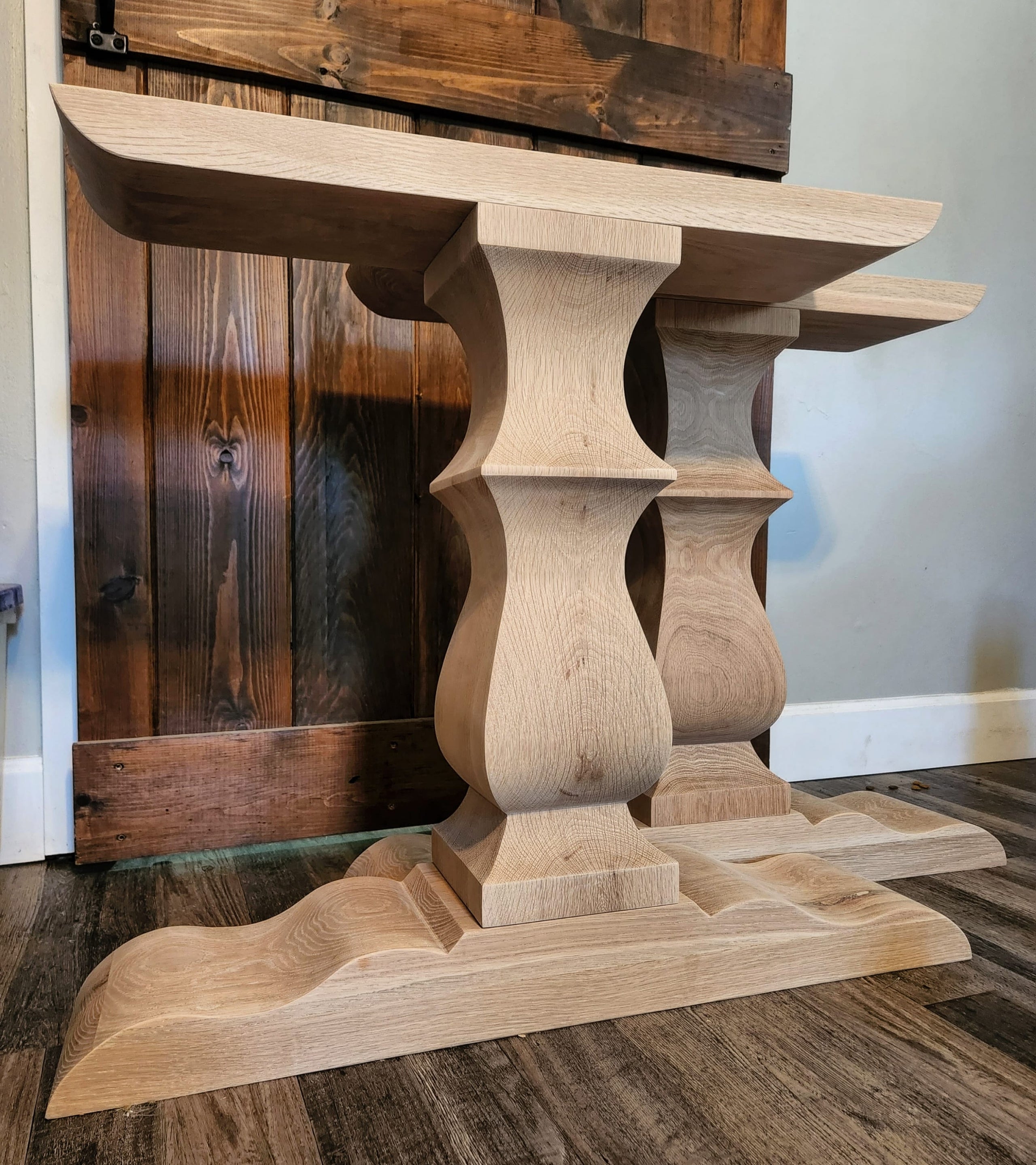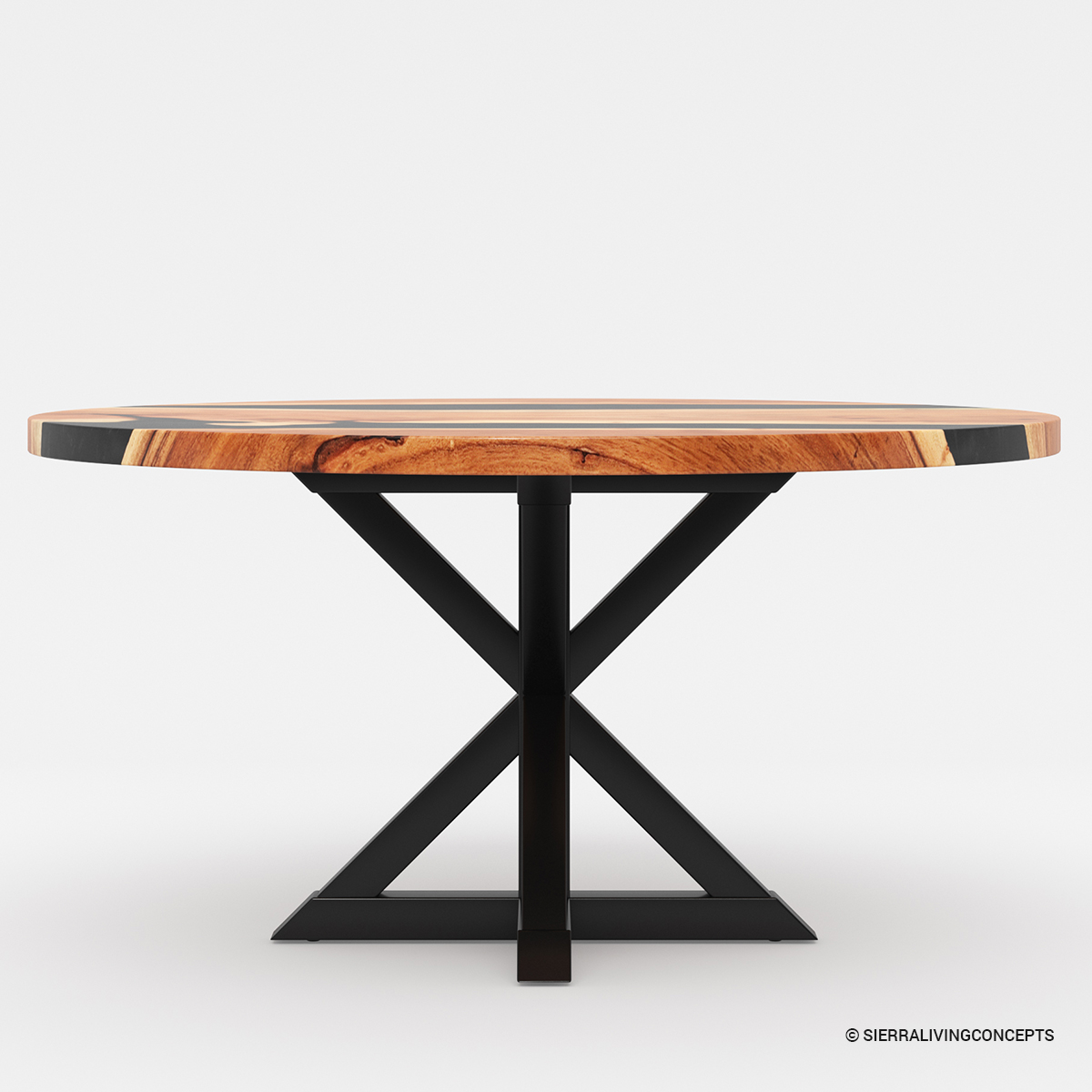From Standard to Modern: Find the Suitable Dining Room Table Legs for Your Design
While traditional layouts such as cabriole and transformed legs evoke a feeling of classic refinement, contemporary styles like hairpin and geometric choices provide an opportunity for striking visual passion. As you consider these aspects, the question stays: exactly how can you flawlessly incorporate these diverse leg styles to develop an unified eating experience?
Comprehending Table Leg Styles
The selection of dining-room table leg designs can considerably influence both the appearances and capability of the space. Each leg design contributes special functional attributes and visual elements, catering to varied layout choices and usage requirements. Understanding these styles is critical for choosing the ideal table that lines up with your overall interior design vision.
As an example, conical legs offer a tidy, classic look that can enhance a space's sophistication, while pedestal bases provide stability and optimize legroom, making them perfect for smaller sized spaces. Hairpin legs, a trademark of mid-century contemporary style, introduce an industrial flair, enabling a ventilated, open feeling. Similarly, trestle legs stimulate rustic appeal, offering robust assistance and a sense of timelessness.
In addition, the choice of materials plays a substantial role. Wooden legs can bring heat and structure, whereas steel options typically convey a streamlined, modern vibe. Inevitably, recognizing table leg designs is important for developing a natural dining area that shows individual style while making certain functionality and comfort. By attentively considering these aspects, you can boost both the aesthetic and practical appeal of your eating area.
Traditional Table Leg Options
When selecting eating space table legs, typical options typically symbolize ageless beauty and craftsmanship. These layouts show an abundant heritage and a dedication to high quality, making them suitable for those that appreciate classic aesthetic appeals.
Among one of the most renowned traditional leg designs is the cabriole leg, defined by its stylish rounded shape. This layout frequently features attractive makings and is most generally located in Queen Anne and Chippendale furnishings. An additional popular option is the transformed leg, which flaunts a collection of smooth, rounded shapes that give a timeless appearance while keeping security.
In addition, the straight leg, while easy, provides a basic and tough structure that can blend perfectly with a variety of tabletop designs. For those attracted to ornate describing, claw-and-ball feet legs stimulate a feeling of magnificence and can serve as a spectacular focal factor in any kind of dining space.
Lastly, stand bases, although not purely legs, provide a different standard choice that allows for enough legroom and can be wonderfully sculpted. Each of these standard leg styles adds to the total setting of a dining-room, marrying feature with visual allure.

Modern Table Leg Designs
Modern table leg styles offer go right here a varied variety of designs that highlight clean lines and ingenious products. These layouts commonly prioritize capability while working as striking centerpieces within a dining space. Minimalist visual appeals are widespread, with legs crafted from materials such as metal, glass, and crafted timber, which add to a contemporary and airy feeling.
One popular style is the barrette leg, defined by its slender, tapered framework that offers security without frustrating the tabletop (dining room table legs). This design is commonly found in mid-century contemporary furnishings and can effortlessly complement different table shapes. One more fad is the use of geometric shapes, where legs might take on angular or asymmetrical kinds, adding visual passion and a touch of artistry

Blending Designs for Unique Spaces
Usually, homeowners look for to develop distinct dining spaces that reflect their individual design by blending different style aspects. This strategy permits for the consolidation of diverse aesthetics, leading to a harmonious yet distinctive environment. For instance, matching a rustic wooden table with sleek, modern metal legs can produce an appealing contrast that raises the room's total appeal.
Additionally, incorporating vintage table legs with contemporary table tops can evoke a feeling of history while maintaining a modern-day sensibility. Such mixes not only showcase private taste yet likewise urge imagination, permitting property owners to curate an area that really feels both personal and welcoming.
Color plays a crucial role in this mixing process; choosing table legs that enhance or contrast with the existing color pattern can improve aesthetic interest. For instance, whitewashed legs can soften the daring of a dark table surface, developing a balanced Click Here visual.
Tips for Picking the Right Legs
Choosing the right table legs is necessary for attaining both functionality and aesthetic charm in your eating space. Begin by taking into consideration the overall style of your space. Typical settings gain from legs that feature elaborate makings or transformed layouts, while modern areas may require smooth, minimalist styles.
Following, assess the height and stability of the legs. dining room table legs. Standard eating tables vary in between 28 to 30 inches in elevation, so make sure the legs click to investigate match this dimension for comfort. Additionally, robust materials, such as hardwood or metal, can boost stability and longevity
Assess the leg shape also-- choices consist of straight, tapered, or pedestal designs. Straight legs offer a classic look, while tapered legs can add a touch of sophistication. Pedestal bases give enough legroom and are perfect for smaller spaces.
Verdict
In recap, selecting the excellent eating area table legs calls for cautious factor to consider of both traditional and modern styles. By integrating leg style, height, and material with the total design, a cohesive and welcoming atmosphere can be attained.
The range of dining room table leg styles can substantially affect both the appearances and capability of the space. Inevitably, recognizing table leg styles is necessary for producing a cohesive dining location that shows individual design while making certain functionality and comfort.One of the most renowned conventional leg designs is the cabriole leg, identified by its elegant bent form. Straight legs use a classic appearance, while conical legs can include a touch of elegance.In recap, selecting the ideal eating area table legs needs cautious factor to consider of both standard and modern designs.